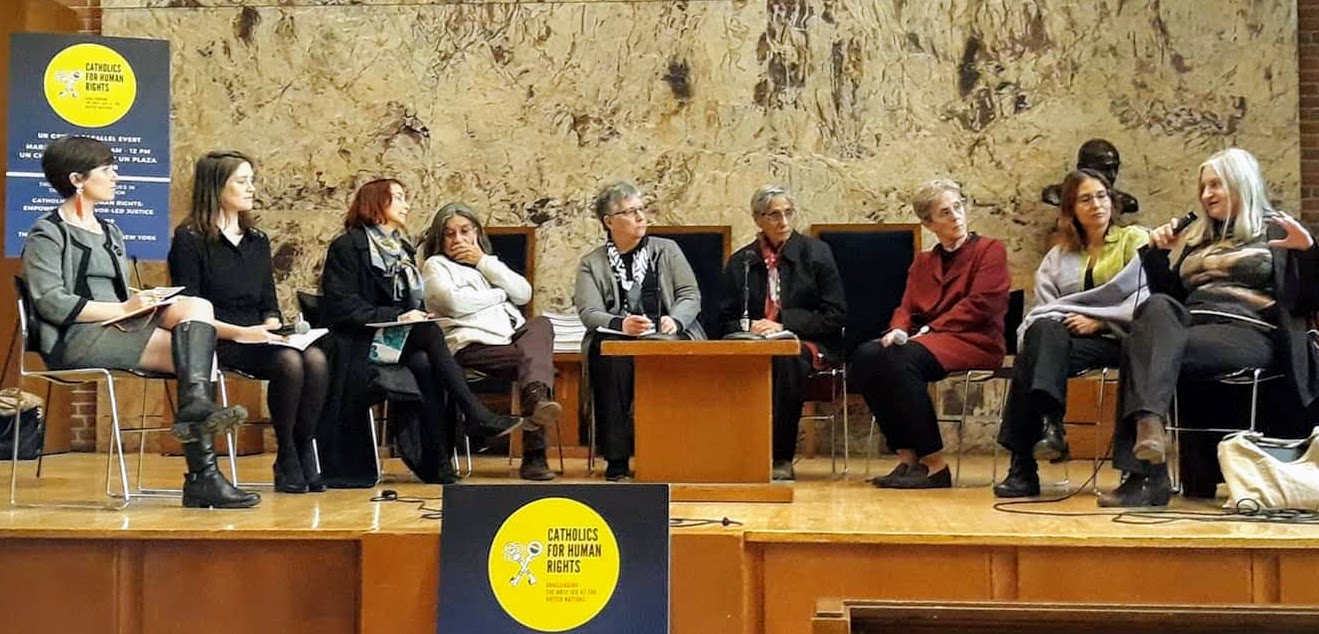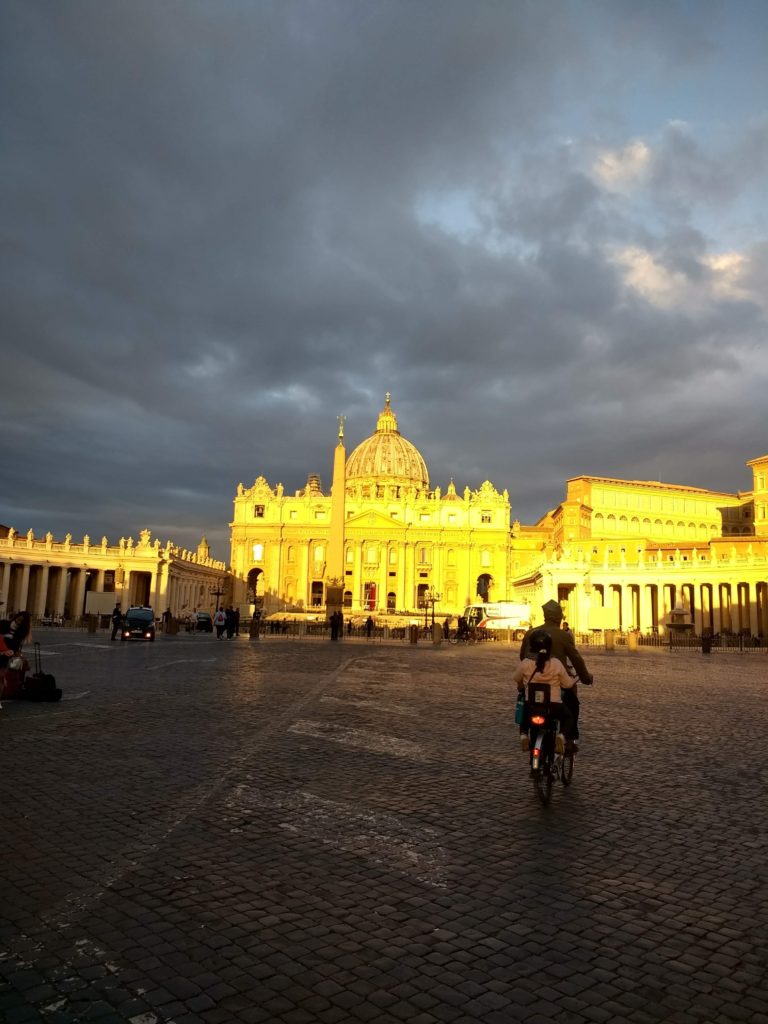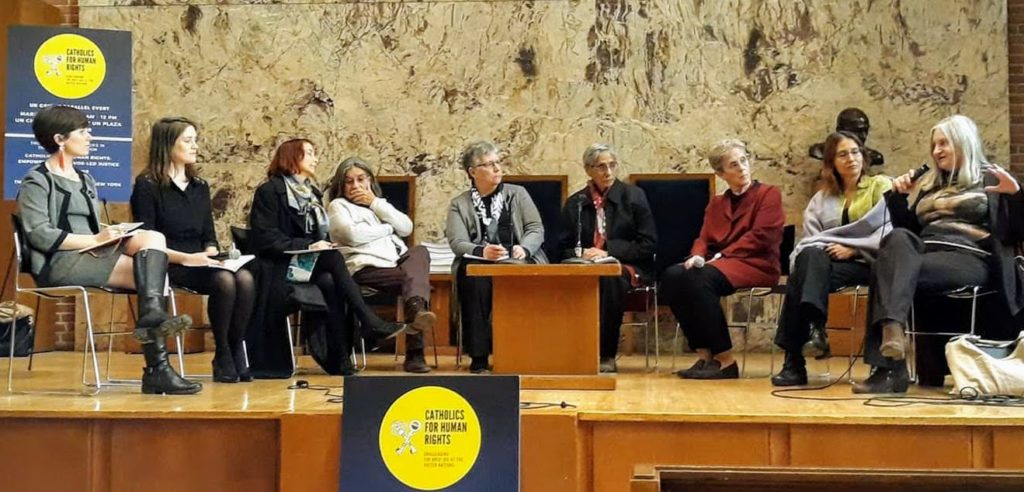Challenging the Holy See at the UN

What do you think of when you hear the word, “Vatican”? An imposing basilica dome? A white cloaked man in a funny car? A sea of red-capped heads? A plaza of milling people and towering pillars?

As I have been finding out these past months, it’s hard to decipher just exactly what “the Vatican” or “Holy See” actually is and, more importantly, what it should be. A territory a little smaller than an 18-hole golf course with only about 30 women (out of 800 people) and a handful of children, its claims to being a “state” are tenuous at best. (A fluke of membership in a postal union seems to have been the main qualification!) Yet, it does participate at the United Nations as a non-member state Permanent Observer, using this status to take part in the general debate of the General Assembly, circulate proposals, co-sponsor resolutions, and exert disproportionate influence in countless ways. Why should this be?
Even more ironically, the Holy See, which explicitly, unequivocally, and
systematically excludes women from all leadership, governance, and
decision-making processes, participates in the annual session of the
Commission on the Status of Women at the UN every March, an entity specifically
founded to promote gender
equality and for the “promotion of women’s rights in political, economic,
social, and educational fields.”[1]
The Holy See refuses to sign the Convention
on the Elimination of All forms of Discrimination Against Women (CEDAW),
the fundamental “women’s treaty” in the UN. Often, the Vatican derails important discussions about
reproductive health and women’s bodily autonomy, impeding progress for the
health and welfare of women and children around the world. Why should this be?
This year, on March 14, 2019, WOC and a group of other concerned reformers once again decided not only to raise the question of why the Holy See is allowed to be part of the Commission on the Status of Women (as has been done many times in the past) but to launch a “complaint” to the Secretary General calling for the revocation of nonmember state permanent observer status from the Roman Catholic Church. As one lawyer in the movement says, “the Church’s status at the United Nations is not a harmless fiction.” The global crisis of rape and sexual violence by Catholic clergy and its subsequent cover up by hierarchs highlights the hypocrisy of the Church’s claims for moral authority and inclusion in entities working tirelessly for the well-being of women and children. But we also now realize that the hybrid status of the Holy See as an administrative body overseeing a religious organization with a tiny enclave in Rome but a global presence with the protections afforded sovereigns and religious entities is a significant factor enabling the widespread sexual violence within the Church. With this State status, officials can invoke sovereign or diplomatic immunity and avoid civil suit or criminal prosecution. Why should this be?

The Holy See is not a State. Rather than enjoying special privilege, it should take its rightful place along with all the other religions of the world, as a Non-Governmental Organization (NGO). As a faithful Catholic, I find it embarrassing that we are assuming Catholicism (which is not the largest faith denomination) should have status and access not afforded any other denominations, or those of no faith. As we rubbed shoulders with thousands of women gathered for the 63rd session of the CSW in New York last week, many of them in colorful indigenous dress, it was abundantly obvious what a marvelously diverse world is represented there. The Catholic Church does indeed have the privilege of being part of the lives of many citizens of many countries – but as a religion. This is how it should be.
When I say the word “Vatican” now, along with that spectacular postcard view of a dome and a Swiss Guard, other images come to mind….that of an entity that systematically excludes women from decision-making, that of an entity using privilege to shield perpetrators of sexual violence, that of an entity whose privileged lobbying for its own system of beliefs causes harmful consequences in the lives of women and children who are not even Catholic. Why should this be?
This is a global issue which, for once, we all can do something about. Let’s get informed by reading the Catholics for Human Rights’ Report on the Holy See at the United Nations and the Open Letter being sent to the Secretary General. Sign the petition to make this change and, most of all, start a conversation in your church pew and all around you about what we mean when we say “Holy See”! All of us “faithful” need a better vision of what the Vatican is and a say in what it does and could do. Why shouldn’t this be?
[1] ECOSOC Council resolution 11(II) of 21 June 1946. http://www.un.org/womenwatch/daw/csw/pdf/CSW_founding_resolution_1946.pdf.

7 Responses
Jesus Christ is not a male sexual object, patriarchal gender ideology is no longer credible, and now we need gender communion in the church hierarchy. Aborting female vocations to the ministerial priesthood is a tradition without truth, a patriarchal custom like male circumcision, made obsolete by the redemption, unnecessary for apostolic succession, and now morally repugnant. The season of Lent is an opportunity to forgive sexist offenses and renew the struggle for redeemed gender relations in the Body of Christ. Mary, Mother of the Eucharist, pray for us!
The Vatican is what it is because of its history and because its officials are savvy, calculating diplomats.
Its status is not likely to be changed by outsiders. I do not think the member nations have enough conscience to do anything about the Vatican’s position on women. It will have to come from within- from the Catholic laity who will call out the hypocrisy.
The Church has been historically slow to see reason. It did not formally acknowledge the world was round until modern times, for example; does that demonstrate neglect? Stubborness or ego? It truly is hard to know and, in my life, was increasingly harder to care. At some point, I stopped relating to the Church altogether. Yet, I root for progress the Church makes; I am glad when a Pope like Francis comes forward.
I look at the Catholic Church sometimes the way one looks at an old relative who refuses to move with the times; their elevation as an essential authority becomes lessened, with their corresponding failure to hear concerns of younger family members, or weigh those matters as important.
While I deeply respect the role Catholicism played for my mother, and the courage she found there, and while I respect the role it still plays for devout friends, I needed to look elsewhere for inspiration.
I do admire the women seeking ordination as Catholic Priests, like the women in nearby Lacey, WA. who lead mass without waiting for Rome’s permission. I am traveling there from Seattle to take part, not having attended mass in decades. This may say something about the raised-Catholic women of my generation as much as it says about me. I strongly suspect it does.
Thank you for this post.
Janette
(Born 1948)
Dear Sheila,
Thank you for your informative recounting of the background to the Vatican’s standing at the UN, steps to inform ourselves on the issues and ways forward.
Catholic women speakers at both AM and afternoon CSW/NGO “Catholicism and Human Rights” and “Survivors Justice” sessions were particularly. powerful. I assume people can google CSW to hear these moving talks.
Women should boycott mass and make the news.
Janette completely nailed it!
kate
(born 1960)
I am a 79 year old cradle Catholic. I am also a retired psychotherapist who has listened to the pain inflicted by members of the Catholic clergy. I know that this disgrace could be decreased by ordaining women and married priests. Until that happens I will not return to the Catholic church.
I have seen women ordained by the Roman Catholic Women Priests organization and attended their Masses. Now I know that women can preside in a
meaningful, uplifting way. I now have hope. Eleanor